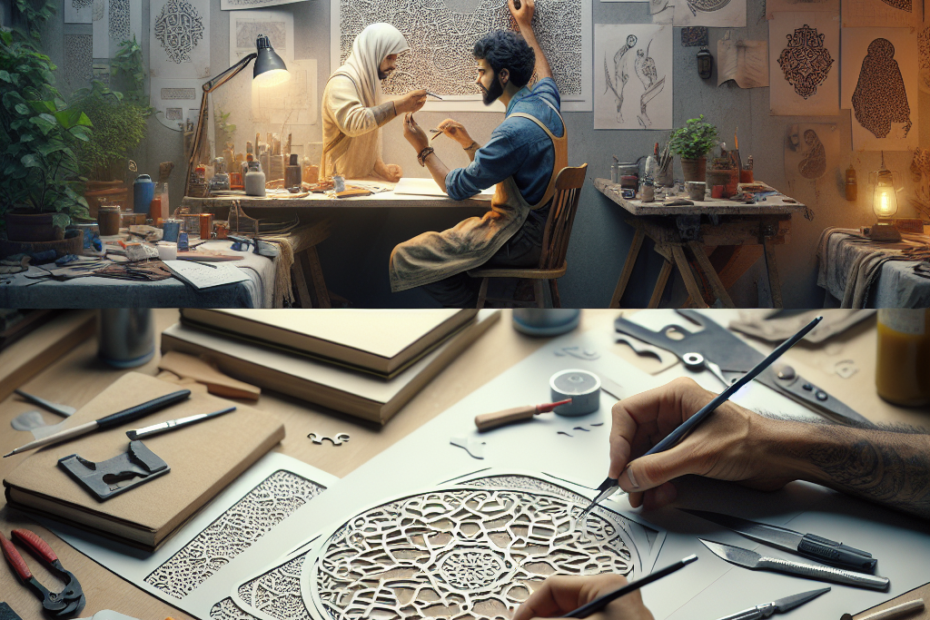How to Make Custom DIY Wall Stencils for Unique Art
They might spend a lot of time browsing wall art on the internet but often come across pieces that just don’t quite meet their vision. This is when making custom DIY wall stencils can be a game-changer. Not only can they save money, but they also get the satisfaction of creating personalized art that can elevate their home decor game.
Why Choose DIY Wall Stencils?
DIY wall stencils have become increasingly popular among home decor enthusiasts. According to a report by Statista, the DIY home decor market was valued at approximately 110.5 billion U.S. dollars in 2019, and it is expected to grow significantly. Making custom stencils is a fun and creative way to express personal style, and they are also cost-effective and reusable.
Materials Needed
- Stencil paper or mylar sheets
- Craft knife
- Cutting mat
- Stencil adhesive spray
- Acrylic paint or spray paint
- Paintbrushes or sponge brushes
- Painters tape
| Material | Purpose |
|---|---|
| Stencil Paper or Mylar Sheets | Create the stencil |
| Craft Knife | Cut out the stencil design |
| Cutting Mat | Protect surface while cutting |
| Stencil Adhesive Spray | Stick stencil to the wall |
| Acrylic Paint or Spray Paint | Apply color through the stencil |
| Paintbrushes or Sponge Brushes | Spread paint evenly |
| Painters Tape | Secure stencil and cover edges |
Steps to Create DIY Wall Stencils
Follow these simple steps to create custom DIY wall stencils:
- Design the Stencil: They can start by designing a unique pattern. They can use design software like Adobe Illustrator or even simple paper and pencil sketches. The design should have clearly defined edges and not be overly intricate for easy cutting.
- Transfer the Design: Once the design is finalized, the next step is to transfer it onto stencil paper or mylar sheets. They can either trace the design or print it directly onto the stencil material.
- Cut Out the Stencil: Use a craft knife and cutting mat to carefully cut along the lines of the design. It is important to move slowly and precisely to ensure clean cuts.
- Prepare the Wall: Clean the wall surface where the stencil will be applied. Dust and any surface debris should be removed to ensure the stencil sticks properly.
- Apply the Stencil: Use stencil adhesive spray to attach the stencil to the wall. Painters tape can also be used to secure the stencil edges and cover areas not meant to be painted.
- Paint the Design: With the stencil secured on the wall, paint over the stencil using acrylic paint or spray paint. Use a paintbrush or sponge brush to evenly apply the color. It’s advisable to use thin layers of paint to avoid bleeding.
- Remove the Stencil: After painting, carefully remove the stencil. Let the paint dry completely before touching the stenciled area to prevent smudging.
Tips for Best Results
- Use High-Quality Materials: Invest in high-quality stencil paper and paints to achieve professional-looking results.
- Test on a Sample: Before applying the stencil to the wall, they should test their design on a piece of cardboard to ensure it looks as expected.
- Apply Thin Layers: Applying thin coats of paint can help avoid dripping and paint bleed under the stencil.
- Clean Edges: If paint bleeds under the stencil, they can use a small brush to touch up the edges.
Key Takeaways
- DIY wall stencils offer a unique, personalized touch to home decor.
- They are cost-effective and can be reused.
- Following simple steps can help them create professional-looking stencils.
- Using high-quality materials and practicing on samples can give the best results.
Frequently Asked Questions (FAQ)
- Q1: What are the best materials for DIY wall stencils?
- A1: Stencil paper or mylar sheets, a craft knife, cutting mat, and stencil adhesive spray are essential materials for making high-quality stencils.
- Q2: Can they reuse the stencils?
- A2: Yes, DIY wall stencils can be reused if they are cleaned and stored properly.
- Q3: How can they prevent paint from bleeding under the stencil?
- A3: Applying thin layers of paint and ensuring the stencil is affixed securely to the wall can help prevent bleeding. Also, using stencil adhesive spray helps.
- Q4: What if they don’t have design software?
- A4: They can create stencils using simple paper and pencil sketches, then trace the design onto the stencil material.
- Q5: How long should they wait before removing the stencil?
- A5: It is advisable to wait for the paint to become tacky but not completely dry to avoid smudging while removing the stencil.
